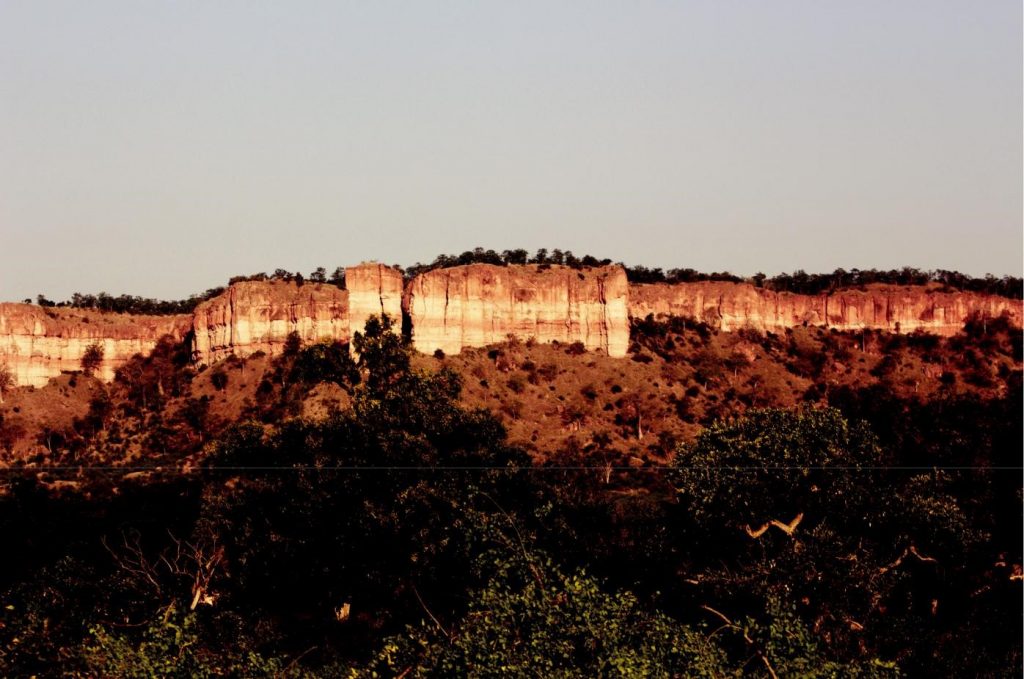Article Elsabe van der Westhuizen
Images Bad Rabbit Studio, Mike Kock and Sinamatella

Gonarezhou, with its iconic Chilojo Cliffs and vast wilderness landscapes, has for long been a forgotten jewel in the crown of
Zimbabwe’s National Parks. However, through an innovative conservation partnership, it has been given a new breath of life and is steadily gaining its rightful place as an iconic wilderness and wildlife destination.
Between 2007 and 2017, the Park was supported by the Frankfurt Zoological Society (FZS) through a long-term cooperation agreement with the Zimbabwe Parks and Wildlife Management Authority (ZPWMA). During this time, emphasis was placed on ensuring the security of the Park’s wildlife and investing in the infrastructure necessary to support effective management of Gonarezhou.
Wildlife populations responded well and the game viewing and overall visitor experience improved dramatically.
Then, 2017 ushered in a new era for the Park, with the formation of the Gonarezhou Conservation Trust. The Trust is an equal partnership between ZPWMA and FZS, and is directly responsible for all aspects of the management and development of the Park.
This innovative conservation model has exciting implications for the long-term sustainability of the Park and through it, the Trust has been able to establish key partnerships with donors who share the vision of a sustainable future for Gonarezhou. This vision is founded on five core pillars, Gonarezhou’s five Cs: Conservation, Communities,
Commercial Development, Connectivity and Corporate Governance
These five pillars are inextricably interconnected and underpin the strategy for the Park going forward. A key component of this strategy is enhancing the Park’s tourism potential, a critical component in ensuring the financial sustainability of Gonarezhou in the long term. Until now, the Park’s tourism offering had focused primarily on the self-drive market, with visitors camping in exclusive, undeveloped campsites in remote areas along the Runde and Mwenezi Rivers. Whilst occupancies have been growing year-on-year, the Park is yet to achieve its goals for tourism and capitalise on its potential.
This vision for tourism in Gonarezhou is to make tourism work for conservation (and not the other way around), retaining the core values of the Park as an untouched and iconic wilderness area.

As a first step towards achieving this vision, all tourism revenue is now retained at a Park-level for direct reinvestment into the conservation of the area. In addition, the Trust has undertaken a full evaluation of the tourism experience in the Park, from reception gates to tourist facilities to roads. This evaluation, along with the general management plan for the Park, is guiding the future for tourism in the Park – and an exciting future it is!

The past year has already seen the refurbishment of Swimuwini Camp, in southern Gonarezhou. The camp’s eight chalets have been given a modern face-lift, opening up the kitchen and living areas to fully appreciate the camp’s beautiful setting along the Mwenezi River.
Each chalet has been fitted out with quality bedding, towels and fully equipped kitchens, and the entire camp now runs permanently off solar power for both lighting and hot water. In addition to the work on Swimuwini, a new introduction this past year has been the first Mananga Camp at Masasanya Dam. “Mananga” can be roughly translated to “a place far away in the bush”, in the local Shangaan vernacular. The concept is not only to offer a camp built in a style that has the lightest footprints, but one which also celebrates local culture and the communities living adjacent to the Park.
The structures are built using reclaimed materials and traditional techniques that are combined with comfortable and quality furnishings and fittings to ensure a truly unique and memorable experience.
Each camp is built by local community members and artisans, who are then trained and employed as camp attendants, bringing the vision full circle by directly connecting conservation, tourism and communities. Given the success
of the first Mananga Camp, the Trust plans to build a further three camps in 2019 (two in the South along the Mwenezi River and one in the North near the Save and Runde Rivers), allowing visitors to easily move from one camp to the next, fully experiencing the diversity of habitats and scenic landscapes the Park has to offer.
Other plans for 2019 include the development of five starbeds in the remote central area of the Park. These starbeds (platforms) will allow visitors to sleep safely with only the starry night as their backdrop, making for an unparalleled wilderness experience. These platforms will be placed at some of the lesser known and isolated pans that attract wildlife from miles around during the dry season. Wildlife is still very shy in the area, with very little human contact but a trickling flow of visitors has already seen a marked improvement on sightings in the area.
Despite the changes in the management of Gonarezhou and the grand vision for tourism, it remains wholly a National Park, not only serving to protect Zimbabwe’s biodiversity but also serving as a recreational area accessible to all Zimbabweans. Whilst our goal is to enhance the financial sustainability of the Park in the long term, the Trust aims to ensure that both the diversity and pricing of its tourism offerings will provide the opportunity for Zimbabweans of all walks of life to visit and celebrate the beauty of their own natural heritage.
For more information, visit www.gonarezhou.org and follow us on facebook at @ gonarezhou.org to keep up to date with happenings and offers in the park.
To make a booking to stay in Gonarezhou, please email reservations@ gonarezhou.org or
call +263 (0) 779 788 811.

